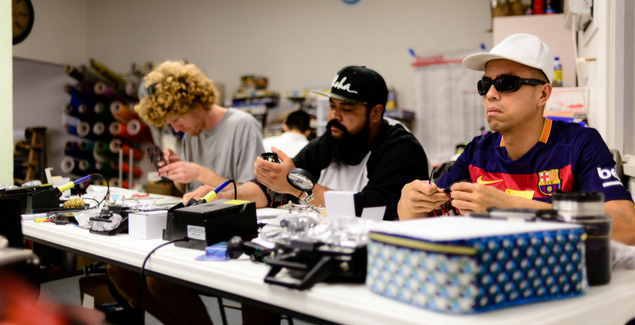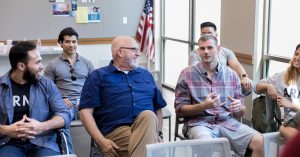Drones were once viewed as something right out of a sci-fi movie, but a veteran-led organization dedicated to these sophisticated robotic systems is looking to change that perception. And its founder plans to rely on his fellow veterans’ skills and experience to do it.
Ryan “Sal” Salcido, a Navy electronic warfare operator (EWO) who founded the World Drone Academy in January 2015, said no one knows drones better than today’s service members. “There is a group of veterans coming out of the military now, and for the last few years, who are really the vanguard of using these robotic systems. From work on the Puma, Raven, and tactical UAS to terrestrial and strategic systems, these guys and gals are really the first generation to get on-the-ground training about how these things can bring value,” he says. “As we grow, I absolutely believe that veterans are keenly positioned to take advantage of this new wave. And I would like to help them.”
Drones are sophisticated robots used for a wide variety of functions. They were first used by the military to complete tasks that fell under “the three D’s—dirty, dull or dangerous, and they basically apply to commercial applications,” Salcido explains.
“Drones will cut your grass, clean your windows, paint your walls, and grow your crops,” Salcido says. With drones completing the tedious and repetitive tasks, humans can focus their time and energy on the more complex duties.
“Imagine you own a lawn care company and you have 10 guys rolling around on riding mowers. Now imagine you have two guys monitoring 10 robotic mowers. Businesses will still have employees, but will need fewer staff to produce higher levels of productivity,” Salcido explains. “Businesses can see huge cost savings in terms of human resources and retirements. It’s much like the introduction of the computer; some people will be displaced, but many new jobs will be created in new industries.”
The World Drone Academy grew out of Salcido’s personal interest in the robotics industry. With his military experience in aviation electronics, robotics was a natural extension of his background.
As he did more research about the possibilities for drones’ use, he realized their enormous potential and wanted to share what he’d learned with others. He officially launched the academy in 2015. Headquartered in Hawaii, where it is known as the Hawaii Drone Academy, there are 17 staff members working on the islands of Oahu, Maui and the Big Island.
Salcido says they are opening an office in Denver and plan to open additional offices in Los Angeles and New York by year’s end. The academy’s mission is to “help connect people and organizations with robotics to help them achieve their vision. Whether land, air, sea, training, implementation or consulting, we offer a full spectrum of solutions helping them through the whole way,” he says.
Their clients are typically some type of organization, whether a small- or medium-sized business, large corporation, municipality or government entity looking to increase productivity and decrease costs.
The academy currently offers training and consulting in five major areas: operations (how to physically operate the system); maintenance and repair; application and use (what task will the system complete?); compliance, and consulting (sales).
The academy focuses on working with their clients to identify and implement solutions to meet their needs. “We bring in experts and specialists for the really technical classes. The Drone Academy is about providing value and quality and I want to make sure our clients are getting the best instruction,” Salcido says.
Because drones were first used by the military, Salcido says veterans are a natural fit for this industry.
“I’m so passionate about this field for veterans,” he says. “This is technology that these guys have been using in the desert for the past decade. This is a huge growth industry, and a great way for vets to come back to civilian life and continue to serve through this high-tech industry.”
Salcido estimates the industry will see annual growth of approximately 20 percent through 2025.
The academy’s education and outreach isn’t just limited to today’s current workforce—Salcido says that educating the next generation is critical to both the growth of their organization and our national security.
“We also do things with junior high and high school through STEM and STEM/robotics. Our future as a nation depends on our ability to understand complex robotics and be really savvy with how to employ them,” he says. “It’s important that our children understand autonomous systems and how to partner with them to increase our human potential. It sounds like sci-fi, but it’s not. It’s here, it’s now. We will see some major changes over the next five to 10 years. It’s an exciting field to be in.”









